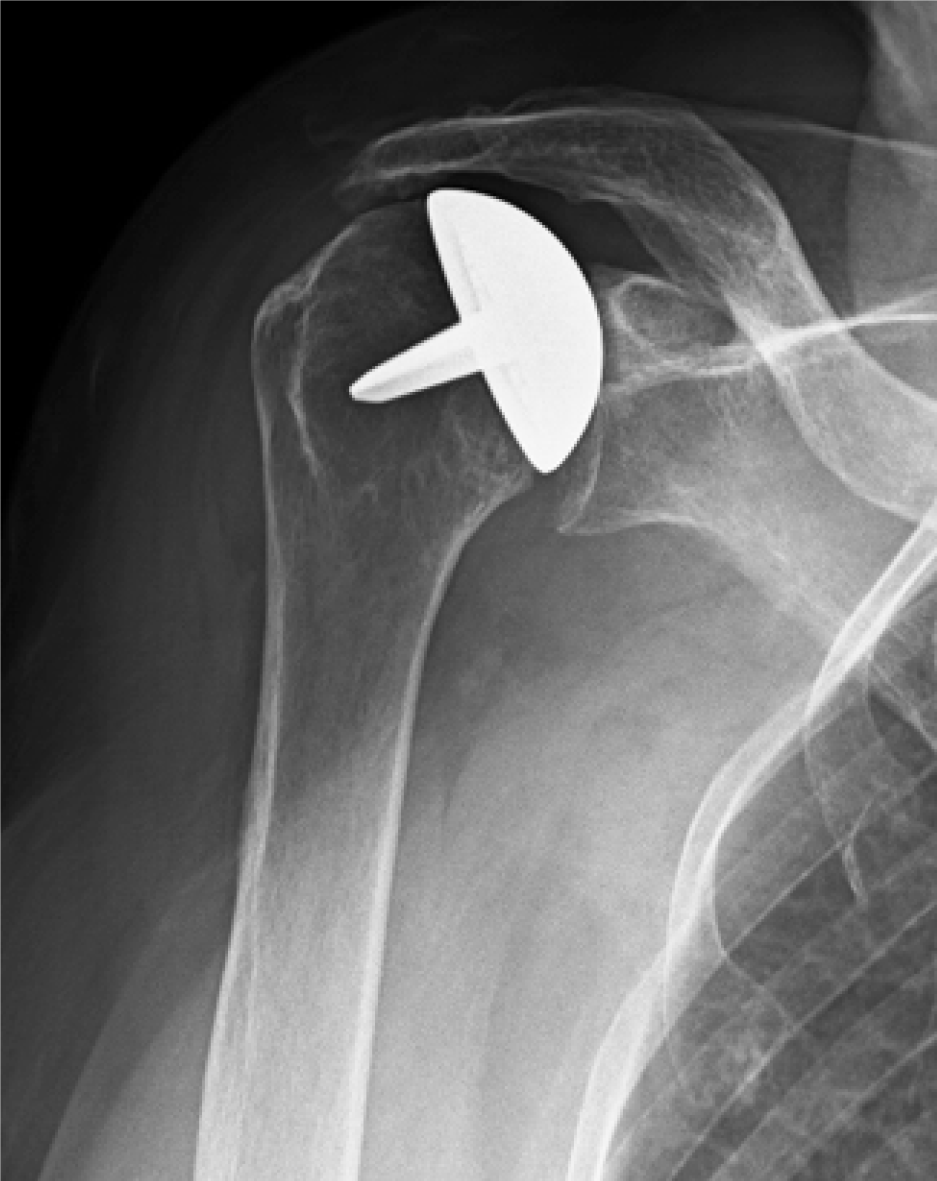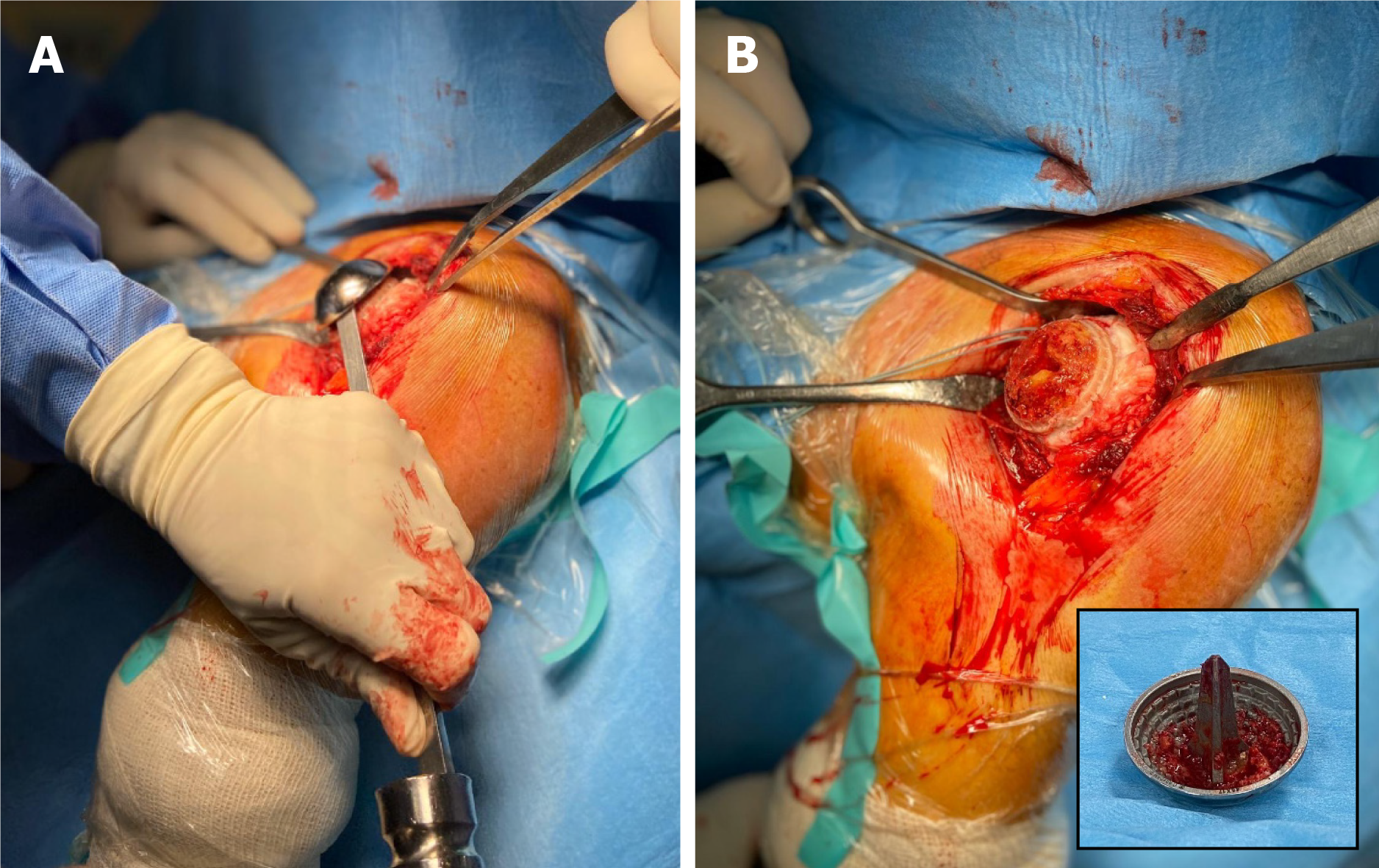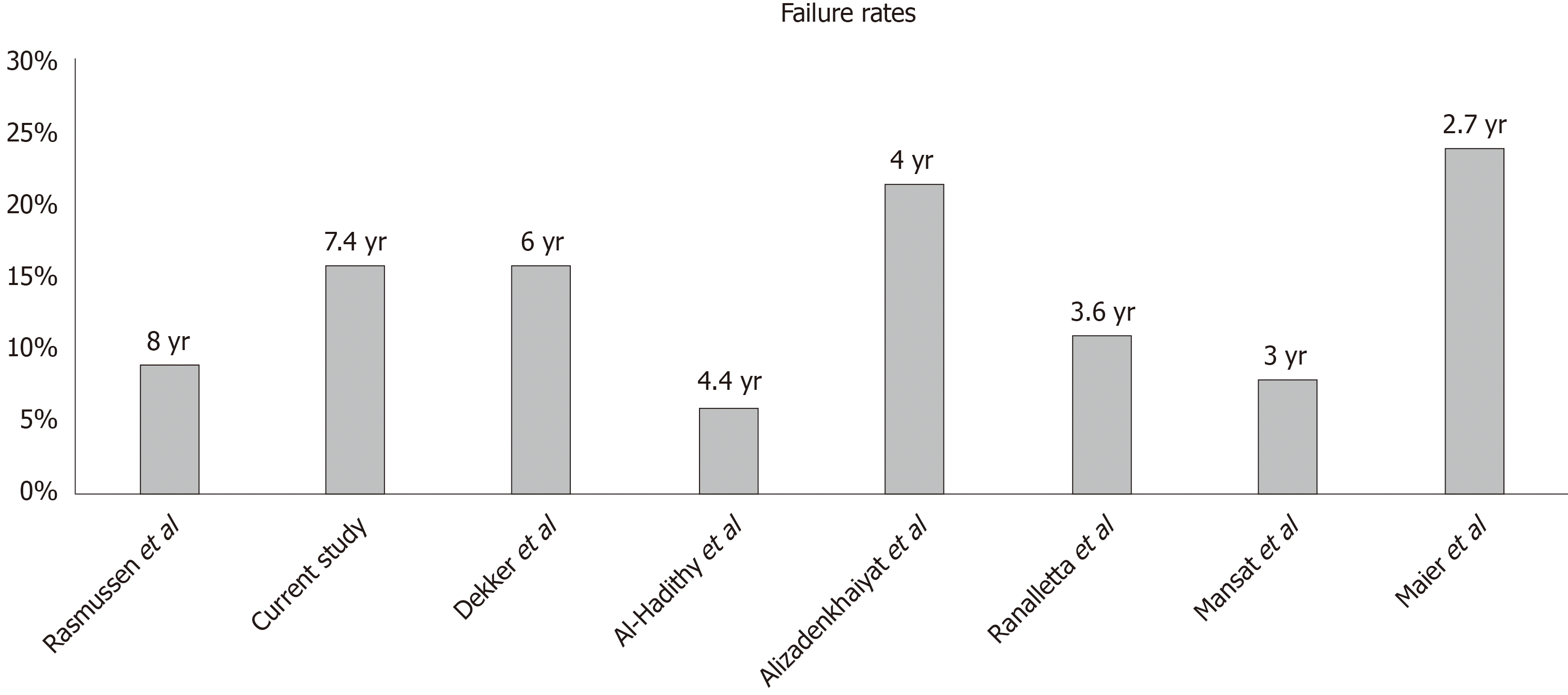Copyright
©The Author(s) 2021.
World J Orthop. Jun 18, 2021; 12(6): 403-411
Published online Jun 18, 2021. doi: 10.5312/wjo.v12.i6.403
Published online Jun 18, 2021. doi: 10.5312/wjo.v12.i6.403
Figure 1 Patient 2.
X-ray of a right shoulder anteroposterior view. Note the superior humeral head migration caused by a traumatic rotator cuff tear 3, 6 yr after surgery.
Figure 2 Patient 3.
A: X-ray of the right shoulder. Anteroposterior view. An evident glenoid erosion (arrows) is detectable 5.5 yr after humeral head resurfacing; B: Revision surgery. Deltopectoral approach. After removal of the implant the glenoid surface damage was assessed by retracting the humerus.
Figure 3 Patient 4.
Revision surgery, deltopectoral approach. A: The removal of the implant; B: The humeral bone stock appears maintained after prosthesis removal (square).
Figure 4 Kaplan-Meier survival analysis.
Figure 5 Reported incidence of humeral head resurfacing failure rates in the literature compared with the current study.
- Citation: Chillemi C, Paglialunga C, De Giorgi G, Proietti R, Carli S, Damo M. Outcome and revision rate of uncemented humeral head resurfacing: Mid-term follow-up study. World J Orthop 2021; 12(6): 403-411
- URL: https://www.wjgnet.com/2218-5836/full/v12/i6/403.htm
- DOI: https://dx.doi.org/10.5312/wjo.v12.i6.403













